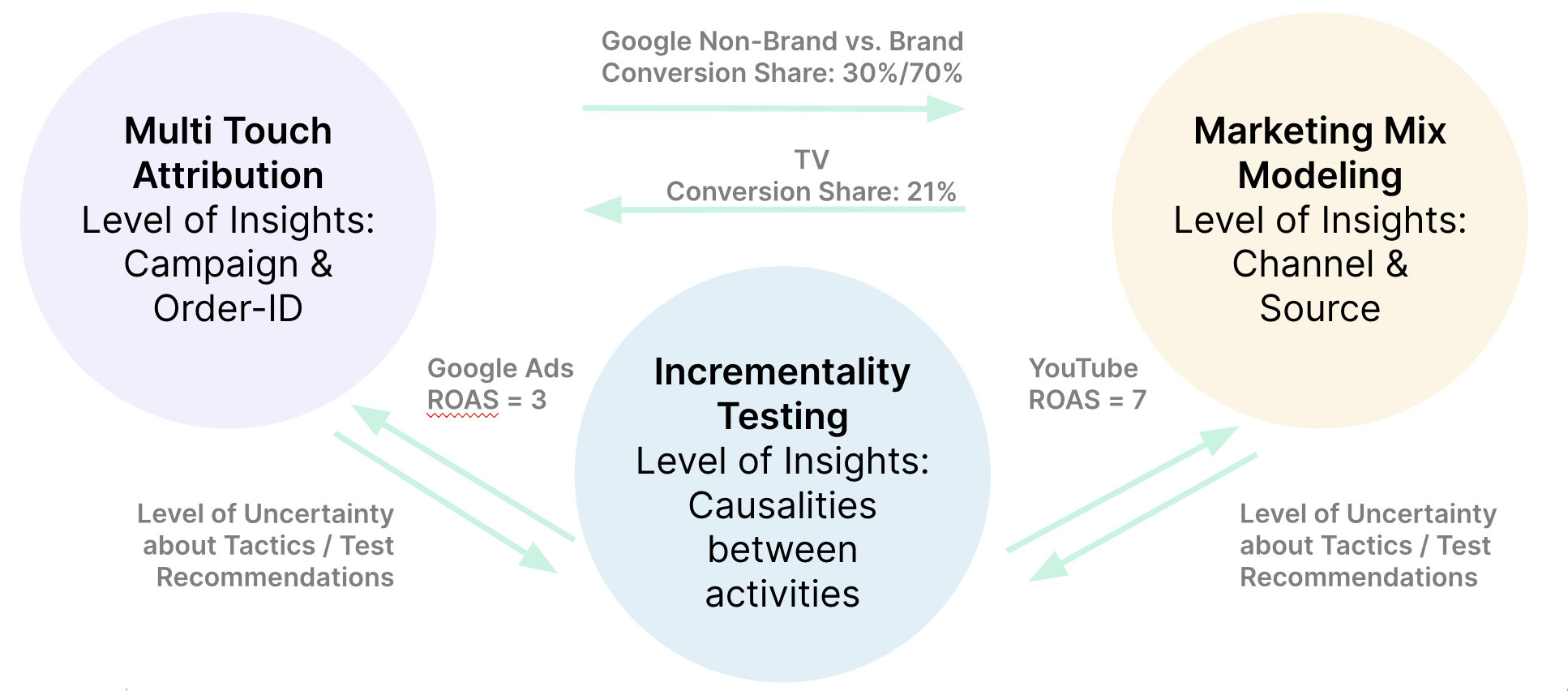What is Triangulation in Marketing Measurement?
When it comes to marketing measurement, many brands presume that choosing the “best” methodology and letting it work its magic is all that is required to get actionable, reliable insights. Unfortunately, this is not the case, and things are a little more complex than that. However, we aim to make things less complex and easier for marketing professionals to grasp. As a marketing measurement vendor ourselves, we get that the technical jargon and ongoing thread of high-tech conversations are offputting, but it doesn’t need to be. Today, we want to talk about triangulation in marketing measurement. What is it? Why should your brand be using it, and how do you go about doing so?
The term “triangulation” is used in many spaces and industries, including psychology, qualitative research, mathematics, and design, just to name a few. But, what does triangulation mean in marketing measurement?
High-quality methods lead closer to the “truth”
Triangulation in marketing measurement essentially means that you (or, a brand) are getting intel from at least three data sources to tell a coherent, holistic story pointing to something closest to the "truth.” This information can come from marketing mix modeling (MMM), multi-touch attribution (MTA), incrementality testing, last-click attribution, surveys, or elsewhere. That being said, we believe that having two higher-quality sources of data, such as incrementality testing and MMM, is better than having three lower-quality methods, like surveys and last click. So, like most things, it’s quality over quantity with marketing measurement methods.
Relying on just one data source is risky, as the method you choose to use might be biased or soon to be outdated, for example, due to the demise of third-party cookies. That is why having at least three sources of data allows for a more complete picture of your marketing efforts, enabling you to get closer to the truth.
How to do triangulation:
Let’s look at some of the best methods to consider for triangulation, in our opinion:
- Marketing mix modeling (MMM): MMM, based on aggregated data, is a measurement technique that quantifies the impact of various marketing inputs on sales or market share. It pinpoints the effectiveness of each marketing channel in terms of Return on Investment (ROI) and helps marketers understand how to reallocate their budget. It is privacy-friendly and considers offline activities, including traditional mediums like television advertising, direct mail campaigns, radio promotions, and out-of-home (OOH) advertising. It also includes non-marketing effects such as product innovations, competitors’ actions, price, placement, and broader macroeconomic conditions. Thus, MMM is a great option for marketers who are trying to find the path from marketing spend to sales and understand how different marketing channels can get you there.
- Multi-touch attribution (MTA): MTA relies on user-level data to understand the customer journey as a whole. For example, MTA helps you understand the likelihood of a customer converting when they see and click your Facebook ad versus when they don't, and how this likelihood changes with other touchpoints the customer has had with your brand. However, with user-level data and third-party cookies becoming less available, MTA alone may not be the best bet for your marketing measurement needs. However, as part of triangulation, it can work towards filling in particular gaps. This is especially true when combined with server-side tracking, which can create extremely valuable insights.
- Incrementality testing: Incrementality testing involves running experiments, such as holdout testing or A/B testing, to find the impact of your marketing efforts on sales. For example, let’s say you are running a marketing campaign for your app and want to test its incremental lift on installs. Group A acts as your control group; it’s the benchmark for installs. These users have not been exposed to your ads. Group B is made up of those who are exposed to your ads. Group A had 100 installs, while Group B had 120 installs. With this information, you can calculate two key insights.
By using these three measurement methods together, we are going to see the best of all three and, at the same time, cancel out any weaknesses by leveraging the strengths.

Why triangulate?
So, besides having a better understanding and a clearer picture of your brand’s marketing efforts, you may be wondering if there are any other benefits to implementing this technique.
Triangulation also covers you for future changes in the measurement space. We spoke briefly about how MTA will be impacted by the end of third-party cookies, and this is just one example of how changes and regulations disrupt methodologies. Privacy regulations like GDPR, iOS updates, and changes in technology make it difficult to remain one step ahead, but with triangulation, you have all bases covered.
For instance, consider a scenario where MTA suggests that TV advertising is ineffective, providing data that seems to support this claim. However, a comprehensive Marketing Mix Modeling (MMM) analysis points in the opposite direction, indicating the positive impact of TV on overall marketing performance. To settle the debate, a test is conducted, and the results align with the insights derived from MMM, proving it to be the more accurate predictor in this particular case.
In such cases, triangulation not only resolves conflicting data but also guides informed decisions, as demonstrated by the decision to increase TV spend based on the validated insights provided by the triangulated approach.
Make better decisions with triangulation
So, in short, we hope we cut through some of the noise and brought things back to basics. Triangulation is a no-brainer for brands that are serious about getting their measurements right and use it to help them make better decisions. If you want to speak to us directly about triangulation, don’t be shy! Our team is happy to discuss your measurement needs at any time.